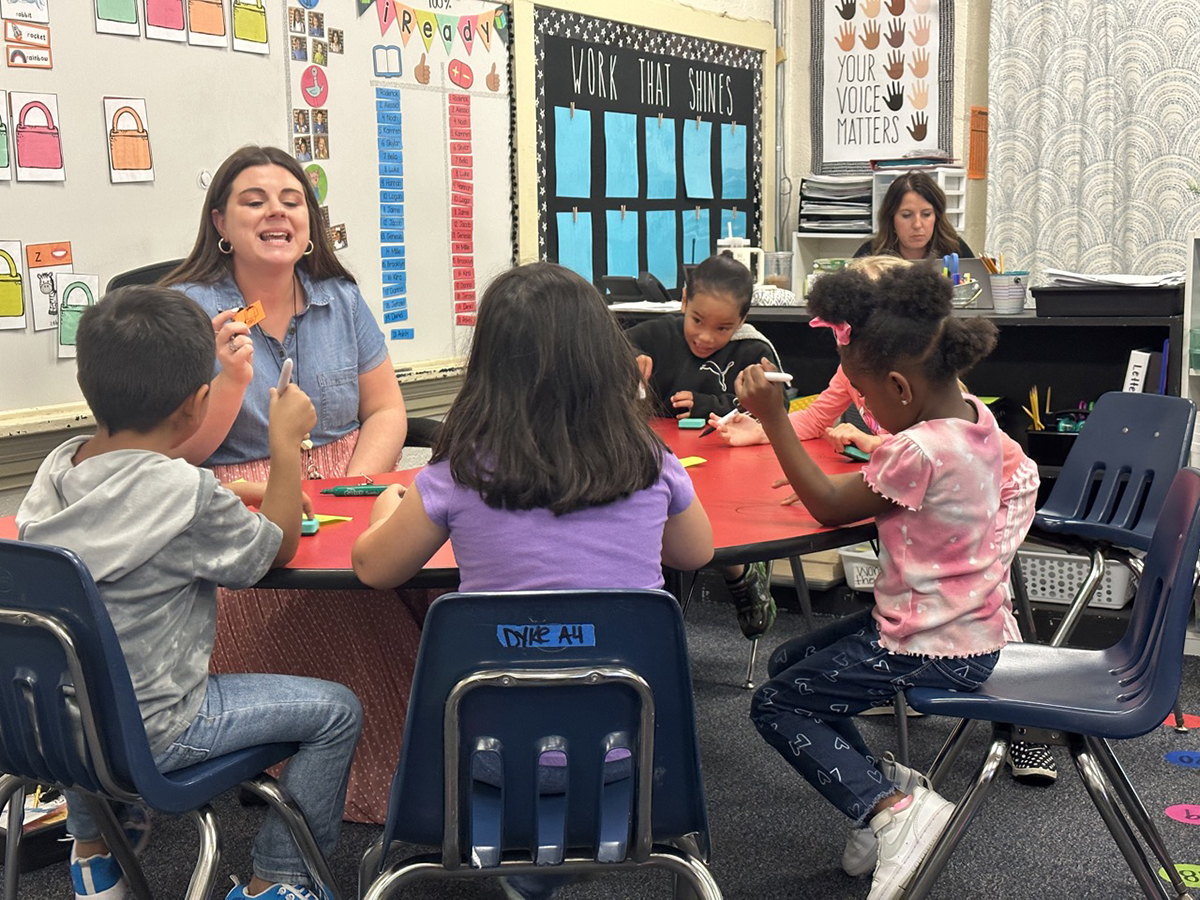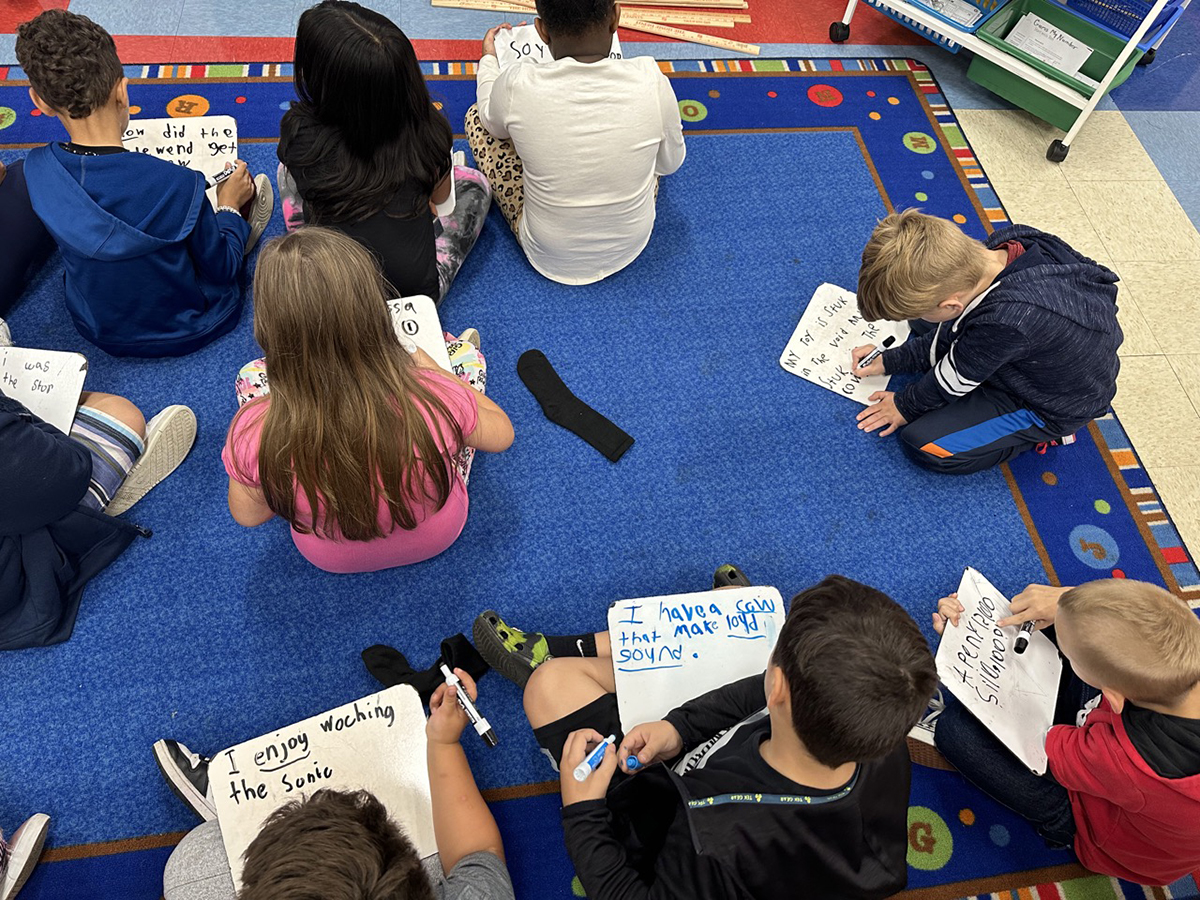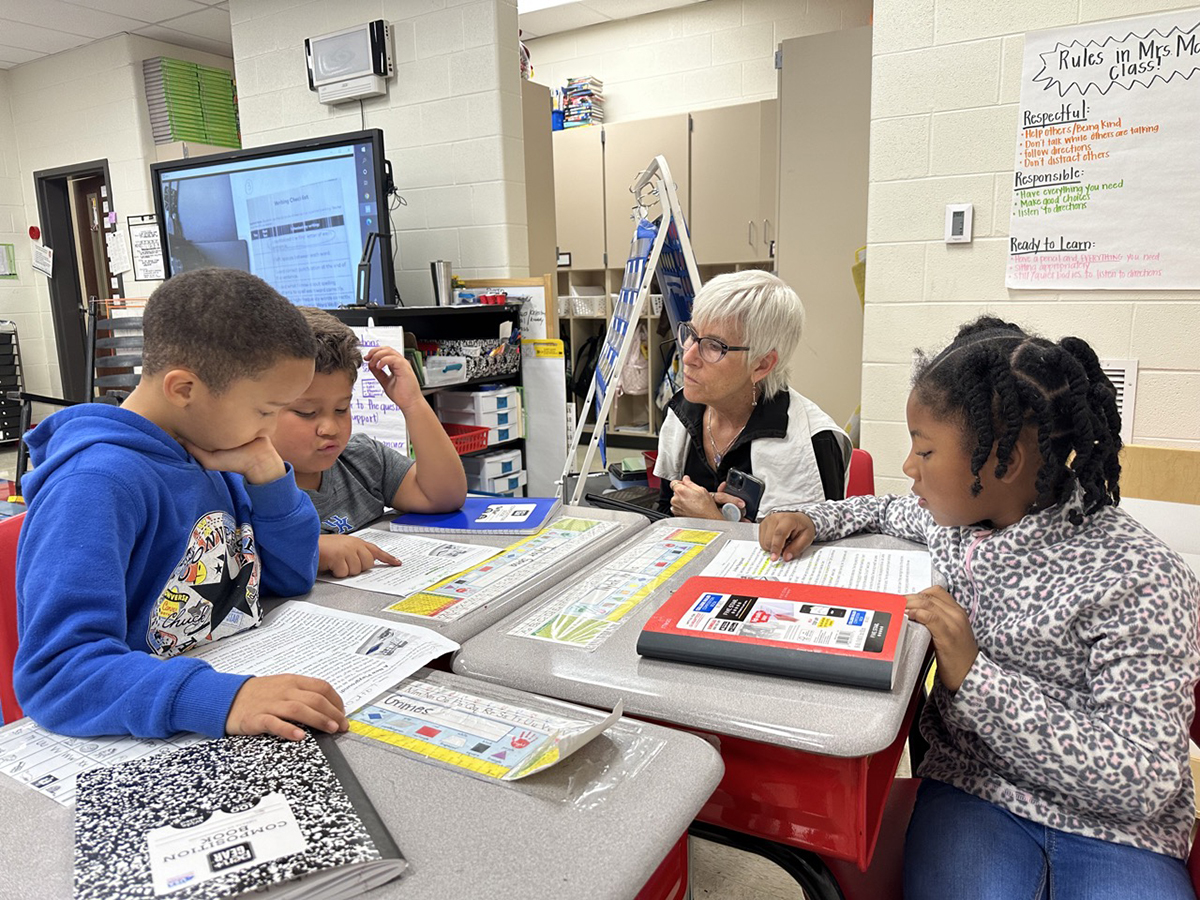Commentary: Students in This Tennessee District Are More Literacy-Proficient Post-Pandemic
This story was produced by The 74, a non-profit, independent news organization focused on education in America.As instructional leaders in our district, we are fortunate to spend lots of time in classrooms. Cathy loves to share the story of popping in on one fourth-grade lesson to observe student writing. The room was cool, dim and quiet; the only sound was the scratch of pencils on paper as students brainstormed ideas for the poems they were going to write, a culminating task to wrap up an EL Education module on poetry. The teacher circulated as students pondered topics that were especially important to them — topics that were worthy of an entire poem.One word at the center of a student’s brainstorm was particularly striking: “education.”We lead literacy work in our district, Murfreesboro City Schools, located about 30 miles south of Nashville in the geographic center of Tennessee. We’re a district of 13 schools serving students from preschool through 6th grade.Our journey implementing a new literacy curriculum, EL Education, has been rewarding, though filled with twists and turns. It began in 2019, when only about a third of our students showed English proficiency on our state assessment. With teachers creating their own materials at the time, just deciding to implement a core curriculum represented a big shift. Teams of educators across the district worked together to select EL Education. Books and ancillary materials were purchased and delivered to schools and classrooms. Then COVID hit — midway into our first year of this new district-wide curriculum.The ensuing two years looked like they did elsewhere: navigating virtual learning, hybrid instructional models, absences due to illness and quarantines and the myriad other challenges the pandemic thrust into education. Teachers were stretched incredibly thin, and implementing a complex curriculum was even more challenging against this backdrop than it would normally have been. In our first year of state testing after COVID, we saw an expected decrease in student proficiency.Coming out of the pandemic seemed like the perfect time for a reset around the use of our new curriculum: a time to cast a wider vision, set new and lofty goals, restructure systems and focus our efforts on deeply understanding the materials and bringing them to life in the classroom.

Over this past year, we’ve focused heavily on deepening our understanding around foundational skills instruction. The Tennessee Department of Education has led a statewide effort to provide all teachers with sounds-first instruction aligned with the science of reading, and 99% of our district’s primary teachers and academic interventionists have completed this training. A great effort has been made by district leaders to ensure all foundational skills instruction aligns to the EL Education curriculum and the science of reading, ensuring teachers used a systematic, explicit phonological awareness and phonics approach. Our teachers are already seeing the impact of a sounds-first approach with a strong foundation skills curriculum.“Student writing is far better than I’ve seen before,” kindergarten teacher Kim Taylor said. “I’m amazed at what my students are writing.”

We also created a protocol for educators to clarify the process by which teachers prepare to utilize the materials. Called the Prepare to Teach Cycle, it begins with a high-level overview of the unit of study: reading and annotating core texts; exploring the essential questions; articulating the knowledge students will gain and the thinking they will need to do on an anchor chart. Then, we take the assessments ourselves and explore the thinking that’s required for students to perform well and common misunderstandings that may hinder that success; we add these thinking demands to the chart as well. With this chart and student texts front and center, we then work to internalize, and sometimes, rehearse lessons together to deeply understand the purpose of the lesson and the teaching priorities required to accomplish that purpose. Last, we teach and reflect by looking at student work or instructional data from the TN Foundational Skills Instructional Practice Guide, our walkthrough tool.The entire Prepare to Teach protocol lives in an environment of teacher voice; they set enabling conditions such as choosing when to meet, how often, how long, what pre-work will be done, team roles, and the like. We’ve seen the cycle impact student work and teacher practice. As one teacher reflected, “I think for us to truly do this job effectively, we have to be together, planning together and talking through what we notice in different lessons. [The cycle] made me confident in my own abilities.”Finally, we streamlined everything we do to consistently embed our work in the materials. All of our professional learning, cross-district teacher literacy networks, and school-based conversations are grounded in the materials. We talk a lot about how to keep the text at the center of instruction, how to focus on the knowledge students should get from the texts and how to provide just the right support so every student has access to — and the opportunity to truly grapple with — complex work.

That grappling is already paying off. In the spring of 2022, our students’ proficiency levels were the highest we’ve seen in our district since we adopted new standards in 2017, outperforming our pre-pandemic levels. This lines up with the reading, writing and conversations we see on a daily basis in classrooms.“I think with this curriculum, it’s making those students really feel like they can be world changers and that they can access it,” said third grade teacher Bailey Rose. “We don’t have to lower it. We give it to them as it is, they are able to take it and feel like they can have an impact.”Here in Murfreesboro, we still want to grow and improve, but we are well on our way and have a strong plan to get there. And those poems — they were something else. Education, indeed.


